
views
Making a Gradual Introduction
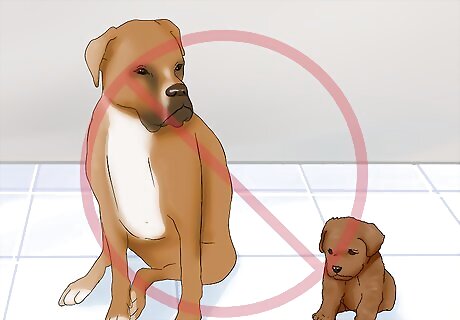
Keep your senior dog visually separate from your new dog. Place their cages at opposite ends of the house and keep them entirely separate for the first few days. During this period, you should take measures to make sure your senior dog does not see the new dog. For example, you should not let them both out of the house at the same time and should keep them in different parts of the house.
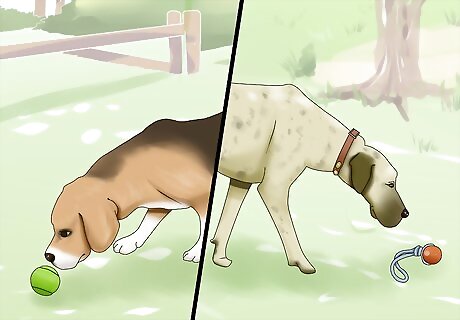
Introduce your senior dog to the new dog via scent. Place one of the new dog’s toys, blankets, or beds in the senior dog’s cage. Your senior dog will smell the scent of the new dog and gradually get used to it. At the same time, place one of your senior dog’s belongings in your new dog’s cage. Your new dog will gradually get used to the idea of another dog in the house. Dogs get to know one another via scent, so this form of introduction avoids the possibility of posing or even fighting, which could happen if you make the introduction too early.
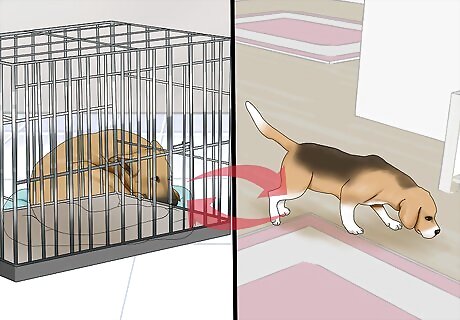
Give the new dog time to explore. Keeping the old dog in their cage, allow the new dog to explore and smell the rest of the house, except for the area where you have your old dog. This will allow the new dog to smell the old dog a bit more while becoming accustomed to the layout of your house. Then, switch roles. Lock the new dog up, and give your old dog time to explore and smell the scents left by the new dog.
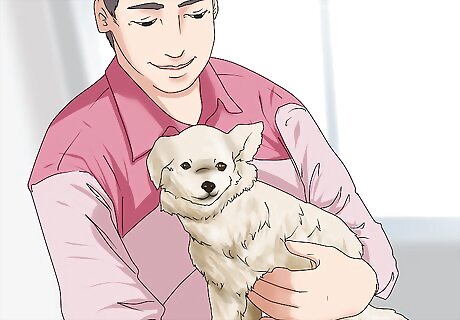
Comfort your old dog. Your old dog may be sad that you have let a new dog into the house so you will want to comfort them. Make them feel they are safe and at home by cuddling up with them on the couch or playing a favorite game. Practice patience with your old dog. Your old dog may start walking slowly or taking more time with things, so you should just be patient with them. Spend quality time with your old dog. Your old dog may not like to exercise as much, but you should still find a way of giving them quality time. This is especially the case if you are introducing a new dog into the house.
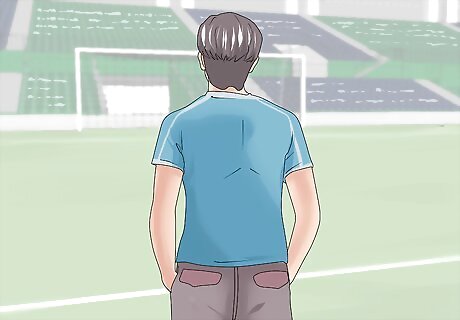
Find a place for the face-to-face introduction. After allowing your senior dog to meet your new dog via smell, you can introduce them in a neutral territory that is away from the house and other dogs. You might take them to a sports field or other natural setting that neither dog identifies as their territory.
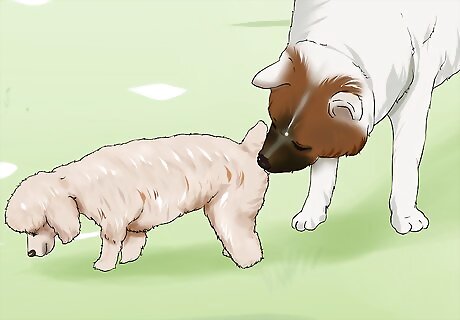
Introduce them. Let your senior dog smell your new dog and vice versa. Give them some time to smell one another, greet, and even play. Try to be as calm as possible so your dogs don't pick up on your nervous energy. Hopefully, they will already be used to their respective scents and will be more amenable to friendship. If your senior dog is friendly with your new dog or vice versa, you should reward them with a clicker and then a dog treat. If they start baring teeth or showing other signs of aggression, you should pull them apart and get them doing something else. You can try introducing them again later or in a different environment.
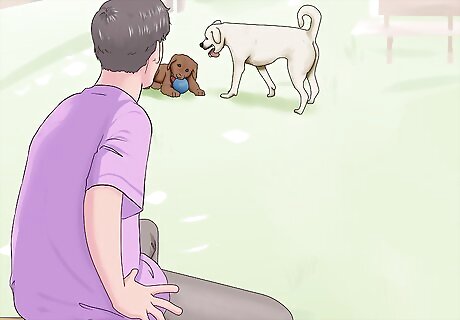
Maintain good relations. After the introduction, you can let your new dog see and interact with your senior dog in the house. However, you need to continue supervising their interactions and make sure they both get adequate alone time. You can use a clicker and associated positive rewards, such as attention or a treat, to reward good behavior between your new dog and your senior dog.
Supervising Interactions
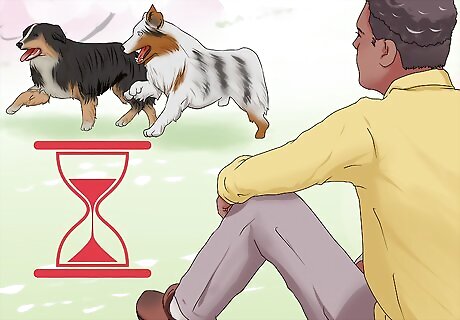
Supervise social time. You need to actually supervise all of the interactions between the new dog and the senior dog. Structure the time they spend in the same space and keep a watchful eye on their interactions. If the senior dog growls at the new dog, you should not intervene. Growling is an important form of communication in the dog world, so your senior dog is simply teaching the new dog a valuable lesson. It may be hard to listen to your old dog growling at your new dog, but remember that they're just establishing boundaries. If you hear loud yelps from the new dog or they start to fight, you may need to intervene, separate the dogs, and keep them apart for a few hours.
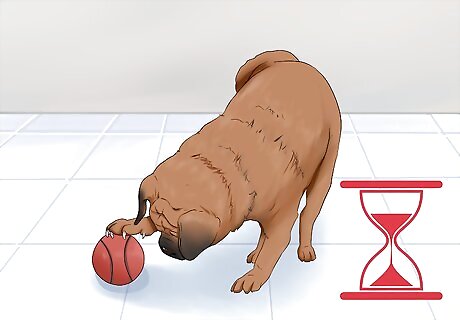
Schedule quiet time. Every day, you should schedule quiet time for both your senior dog and your new dog. Give them a toy to play with in their area of the house, in the backyard, cage or wherever they can spend time alone. Social time can be exhausting, especially for your senior dog.
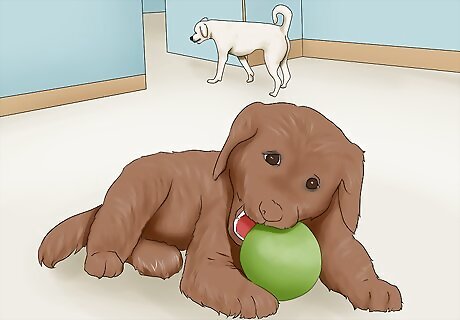
Give your older dog an escape route. Make sure you allow a way for your senior dog to get out of the space where they are interacting with the new dog. They may get exhausted and need to leave the room or retreat to their cage. Avoid locking doors when they are playing together in the same room. Leave your older dog’s cage open with a toy inside. If the puppy follows the older dog when they retreat, you can stop them and put them in another room.
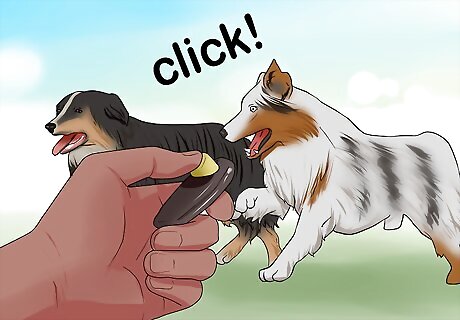
Train your older dog with a clicker. Use a clicker, which is a noise making toy, to train your dogs. When either dog acts appropriately, use the clicker to signal appreciation for the good behavior. For example, if your older dog interacts well with the new dog and abstains from growling, you can use the clicker and then give attention or a treat as a reward. If your new dog is a puppy and acts appropriately or abstains from jumping on your senior dog’s head while they are napping, you can use the clicker and then a treat to reward them. You can buy clickers at your local pet store.
Keep their playtime short in the beginning. Your new dog probably has more energy than your senior dog, so you want to give your senior dog a break. Forcing your dogs to spend too much time together at first can lead to problems down the line.
Recognizing Warning Signs and Intervening
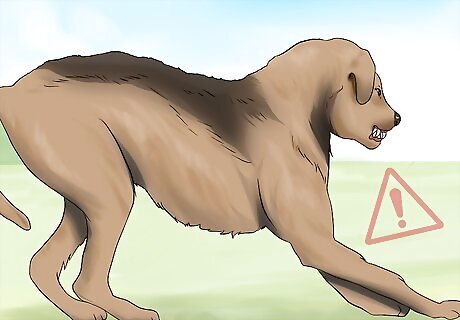
Watch for aggressive body language. Look for stiff legs, hair standing up along the back, or the baring of teeth. These are signs of aggression, so you should pull the dogs apart and get them doing something else for a minute. You can try introducing them again later. Use their leashes to pull them apart. Don't let the dogs off leash when you're first introducing them. Make sure you have two people on hand for the introductions. You will need one person to handle each dog on a leash. Use an appropriate collar on your senior dog and new dog. Depending on the type of dogs you own, you will need a different collar. Good collars include standard flat collars, back-clip harnesses, front-clip harnesses, and head halters. An appropriate collar will allow you to control and train your dog, including during difficult introductions. Try taking them for separate walks around the block. At the end of their solo walks, try introducing them again. If that doesn’t work, you can try again in a week.
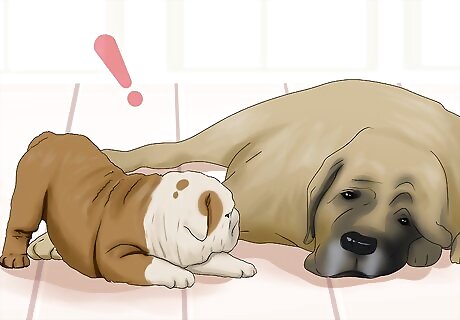
Look for signs of exhaustion. If your older dog is looking really tired all the time, consider giving them more time away from the new dog or the puppy. You can schedule more alone time for both your senior and your new dog, which will hopefully make their interactions more pleasant and enjoyable. If your senior dog refuses to get up, they may be experiencing pain. They may also be exhausted from the interactions with the new dog. Give them more time away from the new dog and talk to your veterinarian about any concerning symptoms. Give your senior dog some alone time with you on the couch. This will be comforting for them and help them adjust to a new dog in the house.
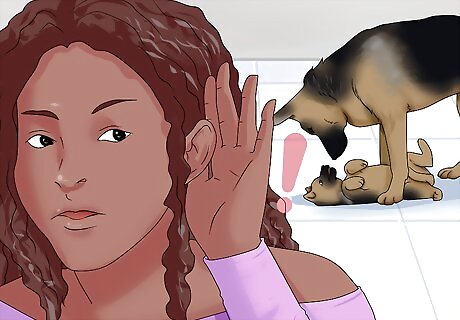
Listen for yelping and squealing. If your puppy or senior dog starts yelping or squealing, it means they want the interaction to stop. If this happens and your dogs continue to be aggressive, you should separate them. If you do not separate them, it's possible they could hurt each other.
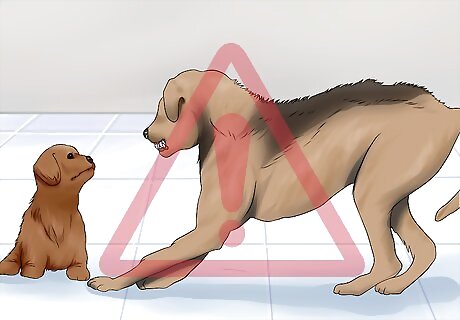
Take note of growls. Puppies take a while to learn the nuances of dog communication. As such, they will often miss the subtle signals and body language that your senior dog uses to communicate. If this happens, your senior dog may have to resort to a growl to get their message across to your puppy. If this happens, take note of it but do not intervene. In time, your puppy will start picking up more dog language and be better able to listen to your senior dog.




















Comments
0 comment